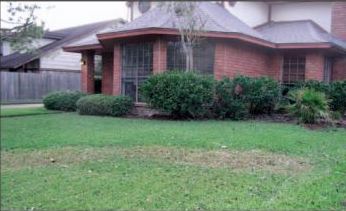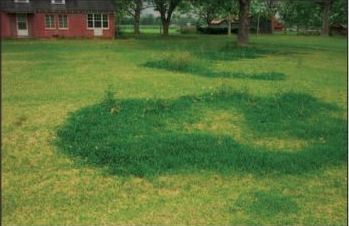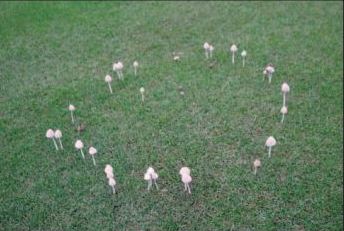
With our lawn care season in full swings, is important to take a closer look to our lawns BEFORE conditions get out of hand.
According to Texas A&M AgriLife Extension:
fairy ring disease causes brown or dark green arcs or circles that appear in lawns, golf courses, athletic fields, and other turf areas. The symptoms are most likely to develop between spring and fall. They are caused by fungi that feed on decaying plant tissue.

Brown-colored drought symptoms from fairy rings develop when the fungus forms an almost impervious (hydrophobic) layer in the soil that prevents water from reaching the grass roots.
Dark green and lush growth of turfgrass near infested areas by fairy ring is caused by the nitrogen that is released when the fungi decompose organic matter. The circular symptoms of fairy ring can range from a few inches wide and 5 to 10 yards in diameter.
Fairy rings are classified by their symptoms:
- Type I: Ring of brown, wilted, dead grass
- Type II: Ring of dark green grass
- Type III: Ring of mushrooms or puffballs

Fairy rings produce varying degrees of symptoms, making classification difficult. The symptoms may occur simultaneously. It is important to note that drought symptoms in turfgrass are associated with Types I and II, and scalping (mowing leaf blades too low) can be associated with Type II symptoms.
Fairy ring fungi are spread by wind or introduced into new areas when contaminated soil and organic matter are added to a site.
Take these steps to prevent and control fairy ring:
Reduce thatch by mowing the grass with a vertical mower and by aerating — removing small soil plugs or cores from the lawn. Remove tree stumps and roots to reduce the amount of organic matter on which the fungus feeds. Topdress — add a fine layer of high-quality sand on top of the lawn. This dilutes the amount of organic matter and provides a substrate for turfgrass root growth.

For dark green fairy ring symptoms (Type II), fertilize the grass with nitrogen to mask the rings by stimulating growth in the rest of the turfgrass. For brown-colored drought symptoms (Type I), aerate the soil and drench it with a wetting agent (a chemical that helps water penetrate and spread) to enable water to reach the grass roots. Apply extra water on the hydrophobic root zone.
Usually, fungicide application is not recommended for home lawns, but it may be necessary for golf courses and other commercial turf.
For more information on this or any other agricultural topic, please contact the Hopkins County Extension Office at 903-884-3443 or email me at [email protected].






